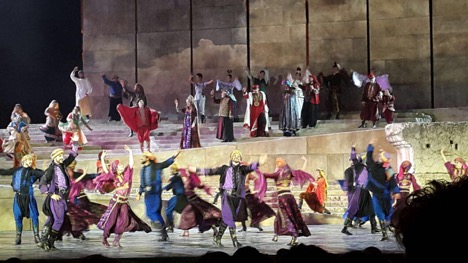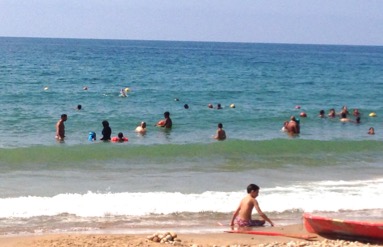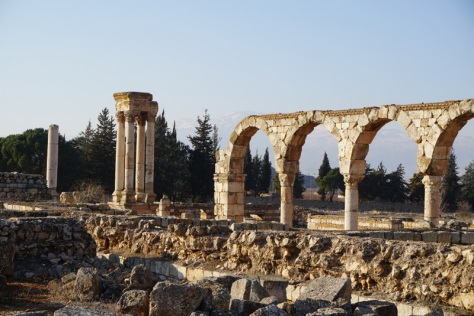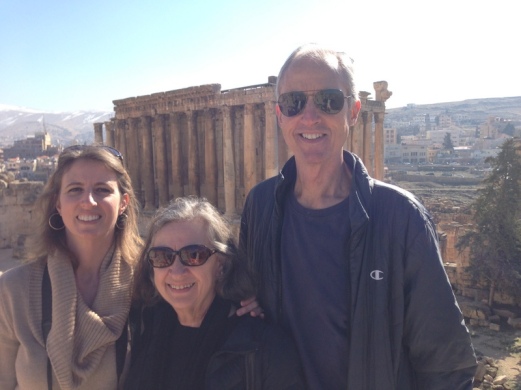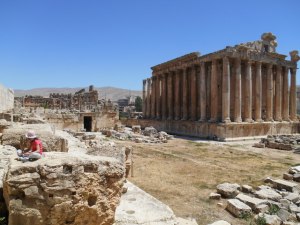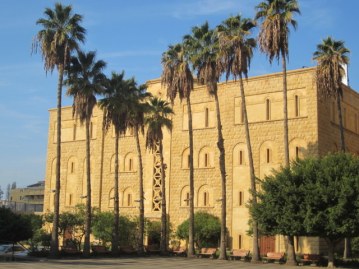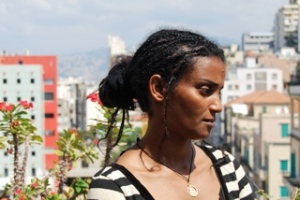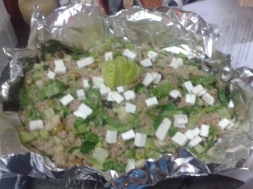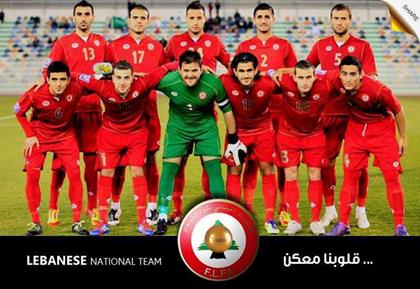It’s been a while since I last posted. But ski season is finally at its end in Lebanon, so I finally have a little more free time on the weekends…

As you might imagine, this snow has been pretty irresistible.
When I say “ski”, “Middle East” may not be what pops to mind for you. Yet Lebanon’s ski season started mid-December this winter, and lasted a full three months. Smaller than the state of Connecticut, the country has five ski stations, one of which still had a couple of lifts open last week. Not bad.

At the Mzaar ski station near the village of Faraya, it’s a scene like no other. Snow bunnies forgo gloves or goggles in order to show off their fake nails and lashes. The “après-ski” scene starts warming up at noon. Crowds mob the baby slopes while there’s no line at all for any other lift.
I know, it’s not sounding very much like a serious ski scene. There is, however, a small group of elite skiers, and Lebanon has sent skiers to the Olympics since 1948.

According to the Lebanese Ski Federation, the first skier in the country was a man named Ramez Ghazzaoui. After studying in Switzerland, Ghazzaoui returned to Lebanon in 1913, determined to recreate his Alpine skiing experience on Lebanon’s snowy slopes. It didn’t much catch on. When the French arrived a decade later under the post WWI “mandate”, they brought their love of skiing. The country’s first ski school was established in the Cedars region of northern Lebanon in the 1930s.
Skiing in central Lebanon, where the Mzaar station is located, took a while longer. An hour from Beirut, the village of Faraya sits on the flanks of the Mount Lebanon range, and the peaks of what is now the Mzaar ski station are an additional twenty-minute drive up a narrow road of hairpin turns. Drawn to the beauty of the peaks and undeterred by the challenges of summiting, European visitors in the 1950s hired locals from Faraya to lug their skis to the top of the slopes.

These holiday decorations remained in place for the entire ski season.
Mahmoud Khalil of Faraya was one of those locals. Paid to do the work without the chance to share in the thrills, Mahmoud decided that he wanted in on the fun. Chopping down a tree in his front yard, Mahmoud hewed his own pair of skis.
Mahmoud passed his passion for skiing on to his three sons: Nabil went on to represent Lebanon in the Olympics, while Tony and Louis became ski instructors. While Tony and Louis share their father’s story on their website Lebanon Slopes, the best way to get the inside scoop is by booking one of them as an instructor. I know, because that’s what I did.

Tony Khalil, ski instructor at Mzaar
Despite growing up in Seattle, an hour from the snowy slopes of the Cascade mountain range, I had never skied before arriving to Lebanon. After years living far from any ski resorts, my husband Luca was thrilled to end his 20-year skiing hiatus. Our first winter in Lebanon, Luca organized a fortieth birthday bash for me in the mountains: a family weekend where the kids and I learned how to ski and Luca got to rekindle his old love of skiing.
After the first weekend, the kids rarely took an instructor, but as might be expected of a not-especially-athletic-40-year-old, it took me a little longer. Now finishing my fifth winter in Lebanon, I still hire an instructor occasionally (I’ll make it to the advanced slopes one day!). Tony is by far the best instructor I’ve hired. First and foremost for his skiing and teaching skills, but it’s a nice bonus that he has good stories to share during those long lift rides up the slopes.
The first lift was installed at Mzaar in 1959 or 1960 (depending on who you talk to), and Tony says that he and his brothers were “born with skis on our feet.” They learned to ski the way most of us learn to walk—as a basic expectation for getting through life. His brother Nabil went on to become a national champion, and represented Lebanon in the Olympic Games in Sarajevo in 1984.
Nabil’s accomplishment is all the more noteworthy given that it occurred while Lebanon was in the midst of Civil War, which stretched from 1975 to 1990. The airport runway was shelled as the plane carrying Nabil and other Olympians was departing. (Read this incredible article from 1984 for more details.) One of the hotels at the base of the slope was occupied by a militia.
“You see that stretch right there?” Tony said, pointing to a slope nearby as we rode the ski lift. “For the most part we could ski without problems, but in that part right there, we were visible to snipers from the other side. So we just went as fast as we could and hoped for the best.”
Unlike Beirut, where the destruction of war is still visible in buildings punctured by bullet holes, there are few vestiges of the war in Faraya and Mzaar. One exception is at the top of the eponymous Mzaar peak, at 8,087 feet (2,465m), the highest point of the ski resort. On clear days you can see the sea from the summit.

My husband at the summit of Mzaar with the sea in the background.
Mzaar means ‘shrine’ in English, and the peak was named for a Roman temple that once sat atop the mountain. The temple had been converted into a chapel, but the structure was destroyed during the civil war. All that remains is a bell that skiers love to ring when they reach the summit.

After five years I finally became a good enough skier to try the Mzaar slope. Okay, truth be told, they opened a back route down from Mzaar this year that is easier than the front descent.
Indeed, the Mzaar of yesteryear would scarcely be recognizable today to Mahmoud Khalil. While there were only three lifts by the end of the civil war in 1990, there are now more than 20. The four chalets that were built in 1960 have multiplied into dozens of hotels and vacation apartments. Mzaar hosts Red Bull challenges (jump and freeze anyone?) and lingerie fashion shows (yes, seriously) on the snow. (Lebanese Olympic skier Jackie Chamoun scandalized the nation by appearing in a 2014 pre-Sochi photo shoot at Mzaar with nothing but her skis and a pair of pink panties.)
Thousands show up every weekend to join the party. So next winter, if you’re still skiing on the bunny slopes, as cute as those bunnies might be, follow my lead and hire an instructor. You’ll get away from the beginner slope mobs, and have the chance to admire views of the Mediterranean Sea from the peak of Mzaar on a clear day. If you’re lucky, you’ll get Tony, and have the chance to hear a little more about Lebanon’s unexpected skiing history.

